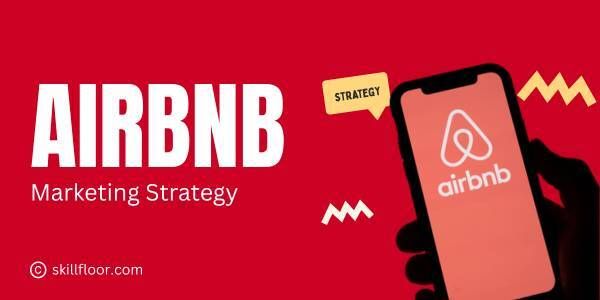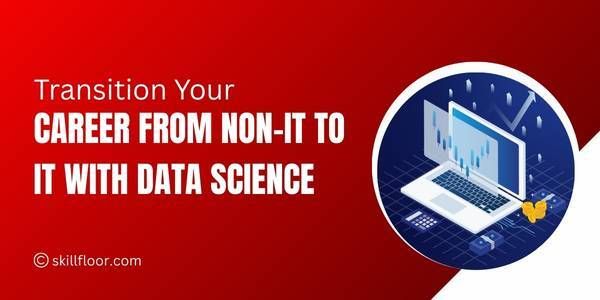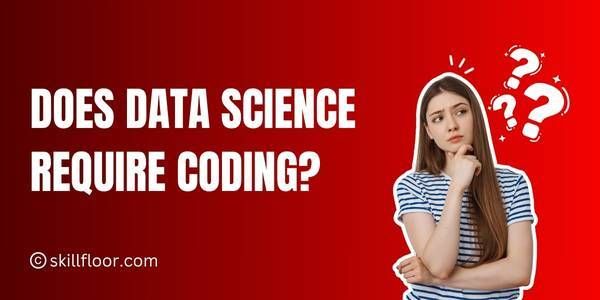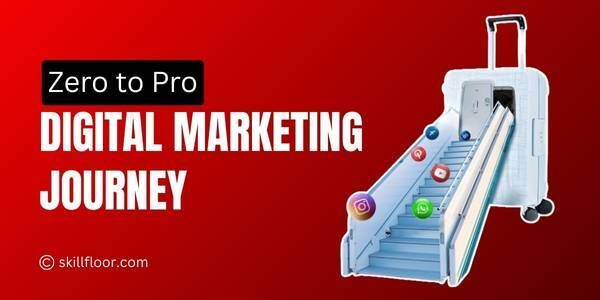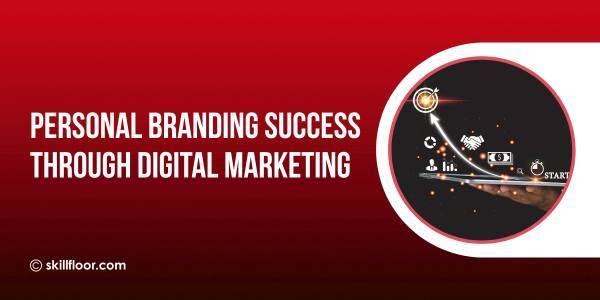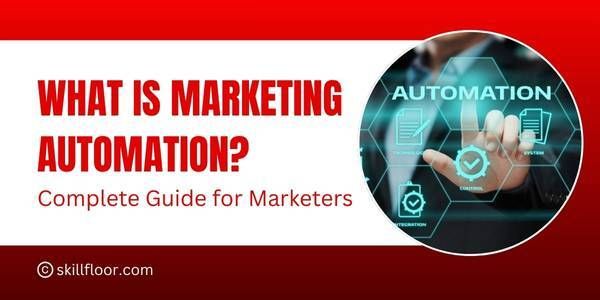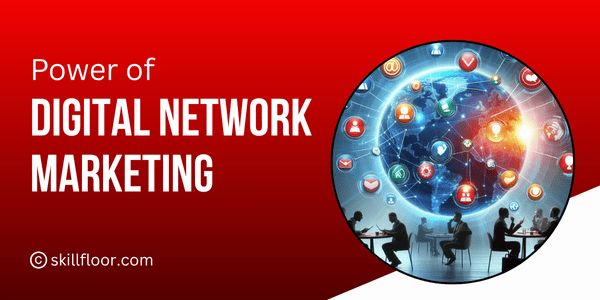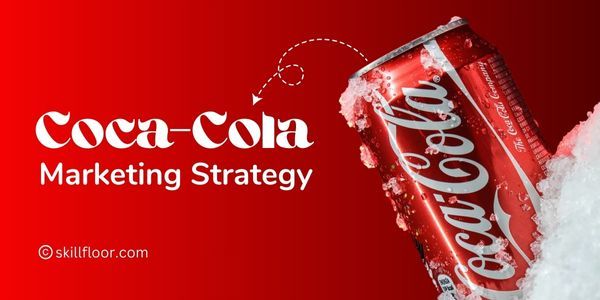Email Marketing Interview Questions and Answers
Explore key email marketing interview questions and answers to help you prepare effectively for your next digital marketing role.

Email marketing continues to be one of the most effective digital marketing channels, delivering a staggering ROI of $42 for every $1 spent (Source: DMA). As of 2023, there are more than 4.3 billion email users worldwide, and businesses across industries are heavily investing in email strategies to acquire, nurture, and retain customers. With this growing demand, job opportunities in email marketing have surged, ranging from associate and specialist roles to managerial and strategic positions.
As a result, hiring managers are becoming more rigorous in evaluating candidates not only on basic knowledge but also on practical execution, tool proficiency, compliance understanding, and campaign optimization techniques. Whether you’re a fresher stepping into digital marketing, an experienced email specialist aiming to upgrade your role, or an interviewer preparing questions for candidates, this comprehensive guide will give you an edge.
Basic Email Marketing Interview Questions
Email marketing fundamentals form the backbone of any digital communication strategy. Understanding the basics is key to building high-performing campaigns that generate leads and revenue. In this section, we explore essential concepts, definitions, and foundational practices that candidates must be familiar with before stepping into any role.
1. What is email marketing?
Email marketing is a digital communication strategy where emails are sent to a list of recipients—prospective or existing customers—to build relationships, deliver valuable content, promote products or services, and ultimately drive conversions. At its core, email marketing is about permission-based communication. It requires building a reliable subscriber list, crafting engaging and relevant messages, and ensuring timely delivery through reliable email service providers (ESPs).
A robust email marketing program can fulfill a range of business objectives, including brand awareness, lead nurturing, customer retention, upselling, and re-engagement. Moreover, it integrates well with other digital channels, including social media, SEO, and paid advertising.
2. Why is email marketing important?
Email marketing is a crucial tool for several reasons:
-
High ROI: It consistently delivers one of the highest returns on investment in digital marketing.
-
Direct Access: Unlike social media, emails land directly in users’ inboxes.
-
Personalization: Allows hyper-targeted communication based on user preferences, behavior, and history.
-
Measurability: Campaigns can be tracked using metrics such as open rates, click-through rates, and conversions.
-
Automation: Emails can be automated based on triggers, reducing manual effort while improving efficiency.
These factors make email marketing an essential channel for brands aiming to maintain ongoing customer engagement.
3. What are the key components of an email marketing strategy?
A complete email marketing strategy typically includes:
-
Audience Segmentation: Dividing the email list based on demographics, behavior, or purchase history.
-
Content Planning: Crafting emails that provide value and align with campaign goals.
-
Email Design: Ensuring readability and brand alignment across devices.
-
Automation: Creating workflows for welcome emails, re-engagement, and product recommendations.
-
A/B Testing: Testing subject lines, CTA placement, and design to optimize performance.
-
Analytics & Reporting: Monitoring KPIs to evaluate success and refine strategy.
-
Compliance: Following regulations such as GDPR and CAN-SPAM to ensure ethical practices.
4. What is a good open rate for an email campaign?
Open rates vary across industries, audience types, and list quality. A general benchmark ranges from 17% to 28%, but more important than the raw number is its trend over time. Factors affecting open rates include:
-
Subject line effectiveness
-
Sender name and email address
-
Time and day of sending
-
List segmentation and personalization
Improving open rates requires regular testing and an ongoing understanding of audience preferences.
5. How do you grow an email list organically?
Organic list-building involves encouraging users to opt in without purchasing email databases. Techniques include:
-
Offering lead magnets (eBooks, webinars, exclusive discounts)
-
Adding signup forms on blog pages, homepages, and exit popups
-
Running contests and giveaways
-
Promoting subscription opportunities via social media
-
Creating referral programs and loyalty incentives
Importantly, list hygiene must be maintained by verifying new addresses and confirming double opt-ins when possible.
6. What is email deliverability?
Email deliverability refers to the likelihood that your email will successfully land in the recipient’s inbox. It’s a complex metric influenced by:
-
Sender reputation
-
Authentication protocols like SPF, DKIM, and DMARC
-
Bounce rates and spam complaints
-
Subscriber engagement (opens, clicks)
A poor deliverability rate can drastically affect campaign performance, even if the email content is excellent.
7. What is the difference between a hard bounce and a soft bounce?
Understanding bounce types is critical for maintaining a clean list:
-
Hard bounce: Indicates permanent issues such as an invalid or non-existent email address. These should be immediately removed.
-
Soft bounce: Suggests temporary problems like a full inbox, server downtime, or message size limits. These can be retried before removal.
Monitoring bounce rates helps protect your sender reputation and improve inbox placement.
8. What is segmentation in email marketing?
Segmentation is the practice of dividing your email subscribers into smaller groups based on predefined criteria such as
-
Demographics (age, location)
-
Behavioral triggers (purchase history, page visits)
-
Engagement levels (opened vs. unopened emails)
-
Subscription preferences
Effective segmentation leads to more personalized communication, which improves open and conversion rates significantly.
9. What is a drip campaign?
A drip campaign is an automated series of emails that are “dripped” to a user over time or in response to specific behaviors. Examples include:
-
Welcome series for new subscribers
-
Lead nurturing campaigns for prospects
-
Re-engagement series for dormant users
Each email in the series is strategically timed to educate, inform, and drive action without overwhelming the recipient.
10. What is CAN-SPAM compliance?
CAN-SPAM is a U.S. federal law that outlines rules for commercial emails. Non-compliance can lead to hefty fines. Key requirements include:
-
Clear identification that the email is an ad
-
Honest subject lines and headers
-
A valid physical address
-
An easily accessible opt-out/unsubscribe mechanism
Compliance not only ensures legal safety but also maintains brand trust and sender reputation.
Advanced Email Marketing Questions
Advanced email marketing involves strategic planning, a deep understanding of user behavior, and the ability to leverage tools and data to drive high-impact campaigns. In this section, we explore complex topics and provide comprehensive answers to help candidates at an intermediate to senior level demonstrate expertise during interviews.
1. How do you optimize email campaigns for better performance?
Optimization is an ongoing process. Begin by defining clear objectives—whether it’s click-through rate (CTR), conversion rate, or engagement. Then:
-
A/B Test Critical Elements: Run tests on subject lines, content layout, CTAs, and send times.
-
Segmentation and Personalization: Use behavioral and demographic data to tailor messages.
-
Mobile Optimization: Design responsive templates since 60%+ emails are read on mobile.
-
Timing: Schedule sends based on audience activity (morning for professionals, evening for shoppers).
-
Monitor Engagement Metrics: Constantly review opens, clicks, bounces, and unsubscribes.
-
Clean Your List: Remove unengaged or bounced emails regularly to maintain deliverability.
-
Content Quality: Include compelling copy, clear value propositions, and engaging visuals.
2. Explain the role of email automation in lifecycle marketing.
Lifecycle marketing refers to targeting users based on their journey stage—awareness, consideration, decision, and retention. Email automation allows you to:
-
Onboard New Users: Welcome emails introduce your brand and provide next steps.
-
Nurture Leads: Send educational content and product insights to move them down the funnel.
-
Trigger Behavioral Emails: Cart abandonment, product views, and inactivity triggers are effective.
-
Encourage Repeat Purchases: Send follow-ups, product replenishment reminders, or loyalty offers.
-
Re-engage Lapsed Users: Win-back emails with incentives or surveys help regain attention.
3. What is lead scoring, and how does it relate to email marketing?
Lead scoring is assigning a value to contacts based on their interaction with your brand. This value is used to identify which leads are ready for sales or require further nurturing.
-
Scoring Criteria: Email opens, link clicks, website visits, downloads, and event participation.
-
Email Use Case: Use scores to automate segmentation and send more relevant emails. For example, high scorers may receive sales-focused content, while low scorers get educational material.
-
Benefits: Improves targeting, conversion rate, and sales team efficiency.
4. How do you prevent emails from landing in spam?
Avoiding spam folders is crucial for visibility:
-
Authenticate Emails: Use SPF, DKIM, and DMARC records to verify legitimacy.
-
Avoid Spammy Language: Phrases like "Buy Now!" or "Free!!!" often trigger filters.
-
Use a Reputable ESP: High deliverability rates depend on the sender’s IP reputation.
-
Permission-Based Lists: Only email users who have opted in.
-
Engagement Signals: ISPs monitor open and click rates—low engagement can signal spam.
-
Include Unsubscribe Links: Required by law and reduces spam complaints.
5. How do you conduct an A/B test in an email campaign?
A/B testing helps optimize elements of an email:
-
Step 1: Define a clear hypothesis (e.g., "A red CTA button will increase clicks").
-
Step 2: Choose a variable (subject line, CTA, layout, etc.).
-
Step 3: Randomly split your email list into two segments.
-
Step 4: Send Version A to one group and Version B to another.
-
Step 5: Measure KPIs like open rates, click rates, or conversions.
-
Step 6: Analyze results over a statistically significant sample size.
-
Step 7: Implement the winning variant in future emails.
6. What is email throttling?
Email throttling is sending emails in controlled batches over a specific time to avoid overwhelming recipient servers or triggering spam filters.
-
Why It Matters: Sending thousands of emails at once can cause delivery failures.
-
Best Practice: Throttle by domain (e.g., Gmail vs. Yahoo), recipient behavior, or geographic location.
-
ESP Function: Most reputable ESPs allow configuration of throttling settings.
7. How would you recover from a deliverability issue?
Recovery begins with identifying root causes:
-
Check Bounce and Complaint Rates: High levels indicate list or content issues.
-
Audit Email List: Remove invalid or unengaged addresses.
-
Warm-up Sending IP: Gradually reintroduce high-volume sends.
-
Improve Authentication: Ensure SPF, DKIM, and DMARC are properly set.
-
Use Engagement Campaigns: Send targeted re-engagement messages to warm up.
-
Contact ESP Support: They can provide insights and assistance in delisting your IP/domain.
8. How do you measure the success of an email campaign?
Campaign success is measured by a mix of engagement and conversion metrics:
-
Open Rate: Indicates subject line effectiveness.
-
Click-Through Rate (CTR): Measures how compelling your content and CTAs are.
-
Conversion Rate: The ultimate metric—did the user take the desired action?
-
Bounce Rate: Reflects list quality.
-
Unsubscribe Rate: Signals content or frequency problems.
-
Spam Complaints: High complaints damage deliverability.
-
Revenue per Email: Tracks financial performance if connected to eCommerce.
9. What are dynamic email elements?
Dynamic email elements are personalized blocks that adjust based on user data.
-
Examples: user’s name, last viewed products, location-based offers, or purchase history.
-
Benefits: Improves engagement by making emails feel more tailored.
-
Implementation: Requires ESPs that support dynamic content and proper data integration.
-
Use Cases: Travel companies show local destinations; eCommerce sends restock alerts.
10. How do you segment for behavioral targeting?
Behavioral segmentation uses data points based on user actions:
-
Engagement Levels: Separate users who open/click emails vs. inactive users.
-
Purchase Behavior: Segment buyers by category, frequency, or value.
-
Website Activity: Track pages viewed, time spent, or cart activity.
-
Lifecycle Stage: New users, active customers, or lapsed users.
-
Custom Events: Abandoned cart, video watched, or demo requested.
Behavioral segmentation results in highly relevant campaigns, increasing engagement and conversions.
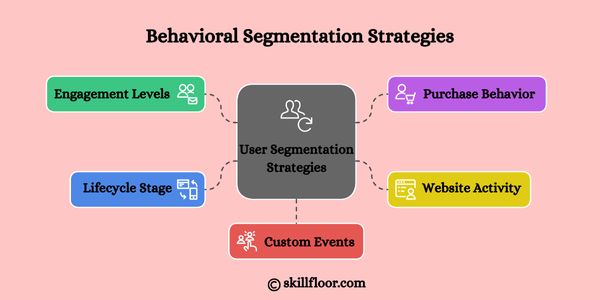
Email Marketing Tools Interview Questions
As email marketing continues to evolve, proficiency in tools becomes a critical requirement for professionals at every level. Employers are not just looking for theoretical knowledge—they want candidates who can effectively use platforms to plan, execute, and analyze campaigns. This section covers email marketing tools, specific questions, and comprehensive answers that test your technical and practical understanding.
1. What tools have you used for email marketing?
Over time, email marketers encounter a variety of platforms depending on the business type, size, and goals. Common tools include:
-
Mailchimp: Known for its ease of use and beginner-friendly interface.
-
HubSpot: Offers CRM integration and advanced automation.
-
ActiveCampaign: Ideal for customer journeys and segmentation.
-
Sendinblue: Combines email with SMS and chat features.
-
ConvertKit: A favorite among content creators and bloggers.
-
Klaviyo: Excellent for eCommerce integrations and detailed customer behavior tracking.
The key is to understand the strengths of each platform and choose one that aligns with your marketing strategy.
2. What is the difference between Mailchimp and ActiveCampaign?
While both are capable platforms, they serve slightly different user needs:
-
Mailchimp: Best suited for beginners or small businesses looking for basic automation, templates, and an easy-to-use editor.
-
ActiveCampaign: More advanced, ideal for companies that need intricate workflows, deep CRM integration, lead scoring, and real-time user behavior tracking.
Your choice depends on the complexity of your campaigns and the level of control you need over segmentation and automation.
3. How do you use HubSpot for email marketing?
HubSpot is a robust all-in-one marketing platform. Key features include:
-
Drag-and-drop email builder for fast template design.
-
Workflow automation that supports complex lead nurturing and scoring.
-
Smart content modules that allow content personalization based on contact properties.
-
A/B testing for subject lines, content, and timing.
-
Reporting tools that integrate with CRM to show end-to-end campaign performance.
-
List segmentation based on behaviors, demographics, and lifecycle stages.
It’s widely used in B2B settings where email marketing aligns with sales goals.
4. What are some advantages of using Klaviyo?
Klaviyo is designed for eCommerce businesses and integrates seamlessly with platforms like Shopify, WooCommerce, and Magento.
-
Customer behavior tracking: Monitors browsing, purchase, and cart activity.
-
Advanced segmentation: Triggered emails based on product interest or order value.
-
Abandoned cart flows: Automatically follow up with customers.
-
Revenue tracking: Ties email activity directly to sales.
-
Template library: Built for product-based messaging.
Its detailed analytics and deep data layers make it an e-commerce powerhouse.
5. How do email marketing platforms handle compliance?
Most platforms are built with compliance in mind and offer tools to help users stay legal:
-
Built-in unsubscribe links in every template.
-
GDPR and CAN-SPAM compliant signup forms with consent checkboxes.
-
Data management features for exporting or deleting user data.
-
Permission reminders at signup.
-
User activity logs to track engagement and complaints.
However, the marketer is ultimately responsible for maintaining good list hygiene and honoring unsubscribe requests promptly.
6. What are custom fields in ESPs?
Custom fields allow marketers to store additional data points about subscribers. Examples include:
-
First name, last name
-
Location, age, gender
-
Last purchase date, total spend
-
Preferred product category
This data can be used for personalization, segmentation, and automation triggers. For instance, you could send birthday offers or follow-ups based on user behavior.
7. What is an ESP?
An ESP (Email Service Provider) is a platform that allows users to:
-
Send bulk emails to a list
-
Create, automate, and schedule campaigns
-
Manage subscribers and segment lists
-
Track performance through analytics
-
Ensure high deliverability through reputation management
Popular ESPs include Mailchimp, ActiveCampaign, GetResponse, and Klaviyo.
8. How do you analyze reports in Mailchimp?
Mailchimp provides detailed analytics for each campaign:
-
Open rate and click-through rate (CTR) help assess engagement.
-
Bounce rates show list quality.
-
Click maps reveal which parts of the email attracted attention.
-
Subscriber activity reports identify who interacted and how.
-
Comparative reports allow you to benchmark across campaigns.
You can also set up Google Analytics UTM parameters to track email traffic on your website.
9. What are tags, and how do they work?
Tags are labels assigned to subscribers to organize and segment them. Unlike lists or groups, tags are flexible and can be:
-
Manually added by the marketer
-
Automatically triggered by user actions (e.g., clicking a link)
-
Used for segmentation to create targeted campaigns
Tags are useful for granular targeting without duplicating subscribers across lists.
10. How do integrations improve ESP capabilities?
Integrations connect your ESP to other platforms like:
-
CRMs (e.g., Salesforce, Zoho): To align marketing with sales.
-
eCommerce platforms (e.g., Shopify): For personalized product recommendations.
-
Analytics tools (e.g., Google Analytics): For performance tracking.
-
Webinar software (e.g., Zoom): To trigger event reminders and follow-ups.
They enrich your subscriber data and create a seamless workflow between tools.
Email Marketing Interview Questions for Freshers
This section is tailored specifically for individuals new to email marketing. These questions are designed to evaluate your grasp of fundamental concepts, tools, and techniques. If you're starting your digital marketing journey, mastering these questions will give you a solid foundation.
1. What is the difference between newsletters and promotional emails?
Newsletters and promotional emails serve different purposes. Newsletters are regularly scheduled communications that share updates, insights, or curated content. Their primary goal is to engage the audience and provide value over time. Promotional emails, on the other hand, are one-time campaigns aimed at driving immediate actions, such as purchases, signups, or event registrations. Understanding this difference helps in deciding when and how to use each type effectively in a campaign strategy.
2. Why is the subject line important?
The subject line is the first impression your email makes. It directly influences whether recipients open the email or ignore it. A compelling subject line should be:
-
Concise and relevant
-
Curiosity-piquing
-
Aligned with the email content
-
Avoiding spammy words like "FREE" or "Click Now." Additionally, subject lines can be tested via A/B testing to determine which variation gets better open rates. High-performing subject lines can improve campaign ROI significantly.
3. What is a call to action (CTA)?
A CTA is a prompt in an email that guides the reader toward a specific action. Examples include "Buy Now," "Read More," or "Sign Up Today." Effective CTAs are
-
Clear and actionable
-
Visually distinct (buttons or bold text)
-
Positioned logically within the email (top and bottom), CTAs should match the intent of the email and lead to relevant landing pages, thus ensuring a seamless user experience.
4. What are the basic metrics to track in email marketing?
Tracking metrics helps you measure and improve your email performance. Common metrics include:
-
Open Rate: Percentage of recipients who opened your email.
-
Click-Through Rate (CTR): The percentage who clicked a link.
-
Bounce Rate: Emails that couldn’t be delivered.
-
Unsubscribe Rate: Users who opted out of your list.
-
Spam Complaint Rate: Indicates users marked your email as spam. Monitoring these KPIs helps identify areas that need improvement and ensures your strategy stays effective.
5. What is email list hygiene?
Email list hygiene refers to the practice of regularly cleaning your subscriber list by removing inactive, unengaged, or invalid email addresses. This improves:
-
Deliverability: Emails are more likely to land in inboxes.
-
Open Rates: A cleaner list generally yields higher engagement.
-
Sender Reputation: Lower bounce and complaint rates protect your domain and IP. Best practices include removing hard bounces, validating new signups, and re-engaging inactive users.
6. How can you avoid spam filters?
To prevent emails from going to spam folders:
-
Avoid trigger words like “Buy Now,” “Act Fast,” or “Guaranteed.”
-
Use proper sender authentication (SPF, DKIM).
-
Personalize content and maintain list hygiene.
-
Don’t use deceptive subject lines.
-
Provide easy opt-out options.
-
Send to permission-based subscribers only. Regular testing and using reputable ESPs can also help maintain inbox placement.
7. What is a landing page?
A landing page is a standalone web page linked from an email designed to achieve a specific objective—usually a conversion action like a purchase, form submission, or download. Characteristics of an effective landing page include:
-
Compelling headline and copy
-
Matching visuals and offer from the email
-
A strong CTA
-
Minimal distractions or navigation links. Landing pages play a critical role in ensuring your email campaigns drive measurable results.
8. What is mobile responsiveness in emails?
Mobile responsiveness ensures that your email displays correctly on all devices—smartphones, tablets, and desktops. With over 60% of emails opened on mobile, it’s essential to:
-
Use single-column layouts
-
Optimize font size and image resolution
-
Test across devices and email clients. Responsive design improves user experience, lowers bounce rates, and boosts engagement.
9. What are email headers?
Email headers are metadata components that include information such as:
-
Sender and recipient addresses
-
Subject line
-
Timestamp
-
Authentication details (SPF, DKIM). While most users don’t see full headers, they play a key role in email routing, deliverability, and spam detection. Understanding headers helps in debugging deliverability issues.
10. What’s the role of personalization in emails?
Personalization tailors the content of emails based on subscriber data. This can be as simple as including the recipient’s name or as complex as dynamic product recommendations. Benefits include:
-
Higher open and click rates
-
Improved user experience
-
Better conversion rates. Personalization relies on accurate data collection, segmentation, and integration with your email platform. It transforms one-size-fits-all campaigns into tailored conversations.
Email Marketing Interview Questions for Specialists
This section is crafted for seasoned professionals who already have experience running email marketing campaigns and managing sophisticated strategies. The following questions are designed to test your strategic thinking, technical expertise, and ability to use email marketing to drive business growth.
1. How do you execute a full-funnel email strategy?
Executing a full-funnel strategy involves aligning your email campaigns with the buyer's journey: awareness, consideration, decision, and retention.
-
Top of Funnel (TOFU): Send educational content like blogs, industry news, or how-to guides.
-
Middle of Funnel (MOFU): Share product comparisons, webinars, and use cases to help leads evaluate solutions.
-
Bottom of Funnel (BOFU): Offer demos, free trials, and promotional discounts to drive conversions.
-
Post-Purchase: Send onboarding emails, product usage tips, and satisfaction surveys. Automated workflows can be designed for each stage using behavioral triggers. KPIs should be monitored at each stage to refine content and timing.
2. How do you manage large-scale email campaigns?
Large campaigns demand a structured and scalable process:
-
Campaign Planning: Define objectives, audience, and key messages.
-
List Management: Ensure segmentation and hygiene across multiple regions or product lines.
-
Automation: Use ESPs to schedule and send emails at optimal times.
-
Quality Assurance: Conduct thorough QA, including content proofing, link testing, and device previews.
-
Performance Tracking: Use UTM parameters and analytics to assess open rates, clicks, and ROI.
-
Compliance Checks: Make sure all emails are GDPR/CAN-SPAM compliant.
-
Cross-Team Coordination: Align efforts with sales, product, and design teams.
3. What are email reputation metrics?
Email reputation metrics indicate how mailbox providers view your sending practices:
-
Sender Score: A number from 0 to 100 that evaluates your domain/IP reputation.
-
Bounce Rate: Should be under 2%; high rates suggest list quality issues.
-
Spam Complaint Rate: Less than 0.1% is recommended.
-
Engagement Rates: Higher open/click rates improve deliverability.
-
Blacklist Status: Avoid being blacklisted by maintaining good hygiene. Monitoring tools like Google Postmaster Tools and Sender Score can help you evaluate and maintain a strong sender reputation.
4. How do you implement re-engagement campaigns?
Re-engagement campaigns are aimed at reactivating dormant subscribers. Steps include:
-
Identify Inactives: Define inactivity (e.g., 90 days without engagement).
-
Segment the Audience: Only target those who haven't interacted recently.
-
Create Compelling Content: Offer discounts, surveys, or personalized recommendations.
-
A/B Test Subject Lines: Use curiosity or urgency to improve open rates.
-
Set Win-Back Goals: Track conversions and opt-ins post-campaign.
-
Remove Non-Responders: Clean the list after final attempts to maintain reputation.
5. What’s your approach to lifecycle email campaigns?
Lifecycle campaigns are automated email flows mapped to the user journey:
-
Welcome Series: Educate new subscribers about your brand.
-
Onboarding Emails: Provide value and guide users through product setup.
-
Upsell/Cross-sell Campaigns: Based on user behavior and purchase history.
-
Renewal Reminders: Encourage subscription renewals before expiration.
-
Feedback Requests: Gather insights after a product experience. Each touchpoint is scheduled based on user behavior, ensuring timely and relevant engagement.
6. How do you handle list segmentation for e-commerce?
Segmentation is key to driving eCommerce performance. Common segments include:
-
First-Time vs. Repeat Buyers: Tailor recommendations accordingly.
-
Abandoned Cart Users: Send reminders with urgency and incentives.
-
High-Value Customers: Offer loyalty rewards or VIP access.
-
Product Category Interest: Send emails based on browsed or purchased items.
-
Geographic Location: Optimize shipping info and local promotions. Using real-time data and behavior triggers can drastically improve campaign relevancy and ROI.
7. How do you calculate ROI for email marketing?
ROI helps evaluate the effectiveness of your campaigns: ROI = (Revenue - Cost) / Cost * 100
-
Trackable Revenue: Use unique promo codes, tracked links, or direct eCommerce platform integrations.
-
Costs: Include ESP fees, content production, and design.
-
Tools: Use Google Analytics, Klaviyo, or HubSpot for revenue attribution. Evaluating ROI allows you to justify budget spending and optimize future campaigns.
8. What is greylisting?
Greylisting is a spam control method where a receiving mail server temporarily rejects an email from an unknown sender. Legitimate servers will retry sending after a delay, while most spam servers will not. It helps reduce spam by adding an extra verification layer. Email marketers should be aware of greylisting to ensure their sending infrastructure is properly configured for retries.
9. How do you ensure design consistency?
Design consistency improves brand recognition and user experience:
-
Use Templates: Create branded templates for different campaign types.
-
Standardize CTAs and Colors: Maintain consistent branding across emails.
-
Cross-Device Testing: Check rendering on major devices and email clients.
-
Accessible Design: Ensure readability with high-contrast text, alt tags for images, and logical content flow.
-
Version Control: Maintain a style guide for headers, fonts, and layouts.
-
Review Process: Collaborate with design teams and test frequently.
10. How do you integrate email with omnichannel marketing?
Email should complement other channels for a unified user experience:
-
Social Media Integration: Promote email signups through social ads and retargeting.
-
SMS: Use SMS for urgent or time-sensitive communications alongside emails.
-
Web Personalization: Sync email behavior with on-site experiences.
-
CRM Sync: Update contact status and preferences across all touchpoints.
-
Push Notifications: Reinforce messages across app and desktop platforms.
-
Analytics: Use a unified dashboard to track behavior across channels. When integrated properly, email acts as the glue that ties your entire digital ecosystem together.
Email Marketing Associate Interview Questions and Answers
The role of an Email Marketing Associate typically involves executing campaigns, maintaining lists, analyzing results, and supporting broader marketing objectives. This section offers practical, real-world questions and comprehensive answers that candidates can expect when applying for associate-level roles.
1. What are the key responsibilities of an Email Marketing Associate?
An Email Marketing Associate is responsible for:
-
Setting up, testing, and launching email campaigns
-
Managing subscriber lists and segmentation
-
Monitoring performance metrics like open and click-through rates
-
Conducting A/B tests to improve campaign outcomes
-
Ensuring compliance with email marketing laws (CAN-SPAM, GDPR)
-
Collaborating with content, design, and development teams
-
Preparing weekly/monthly performance reports The associate role is crucial in executing daily email operations and contributing to the effectiveness of broader digital campaigns.
2. How do you prepare an email campaign from start to finish?
A step-by-step process to prepare an email campaign includes:
-
Briefing: Understand the campaign goals, audience, and messaging
-
Content Creation: Collaborate with copywriters and designers
-
Build: Use an ESP to build the email using drag-and-drop or HTML
-
Segmentation: Choose the right segment or list to target
-
Testing: Preview across devices and run A/B subject line tests
-
Scheduling: Select the right date and time based on engagement trends
-
Monitoring: Track metrics like opens, clicks, and conversions after launch
3. What tools have you used in your email marketing experience?
Commonly used tools include:
-
Mailchimp: Drag-and-drop builder and analytics
-
HubSpot: CRM integration and automated workflows
-
ActiveCampaign: Advanced segmentation and behavior tracking
-
Klaviyo: For eCommerce email flows and performance tracking
-
Litmus or Email on Acid: For testing across email clients
-
Google Analytics: To track traffic and goal conversions. Mentioning tools along with examples of how you've used them adds credibility to your profile.
4. How do you ensure accuracy and quality in campaigns?
Quality assurance (QA) is vital. Best practices include:
-
Double-check all links and CTAs
-
Preview emails on desktop and mobile
-
Test across different email clients (Gmail, Outlook, Apple Mail)
-
Review spelling, grammar, and branding
-
Verify dynamic content and personalization fields
-
Use checklists before launching QA to ensure professionalism, reduce errors, and enhance user trust.
5. How do you analyze email campaign performance?
Key metrics and tools:
-
Open Rate: Indicates effectiveness of subject lines
-
Click-Through Rate (CTR): Measures engagement with content
-
Conversion Rate: Tracks how many completed the desired action
-
Bounce Rate: Shows email delivery success
-
Unsubscribe Rate: Signals user disinterest or email fatigue Use your ESP dashboard and tools like Google Analytics for deeper insights. Compare performance over time to identify trends and opportunities.
6. How do you manage email subscriber lists?
Good list management improves deliverability and engagement:
-
Remove hard bounces and inactive subscribers
-
Use tags and custom fields for segmentation
-
Apply double opt-in to confirm user interest
-
Regularly update preferences and contact info
-
Segment based on behavior, interests, or demographics. Healthy lists keep campaigns efficient, compliant, and effective.
7. What is your process for A/B testing?
Steps include:
-
Define a single variable (e.g., subject line, CTA, send time)
-
Create two versions: A and B
-
Randomly split your audience
-
Launch both versions simultaneously
-
Analyze performance metrics
-
Choose the winner for future use. Frequent testing is key to improving engagement and optimizing conversions over time.
8. How do you handle deliverability issues?
If emails land in spam or bounce:
-
Check sender domain reputation using tools like Postmaster Tools
-
Authenticate emails using SPF, DKIM, and DMARC
-
Remove unengaged or invalid addresses
-
Avoid spam-trigger words in subject lines
-
Send consistently and avoid sudden spikes in volume
-
Contact your ESP’s support team if technical problems persist. Addressing deliverability early prevents long-term damage to your sender reputation.
9. How do you personalize email content?
Personalization improves relevance and engagement:
-
Use first names or custom fields in subject lines and copy
-
Segment content based on user activity or preferences
-
Recommend products based on browsing or purchase history
-
Automate follow-up based on past interactions. Personalization requires clean, accurate data and proper use of dynamic content blocks within your ESP.
10. How do you stay updated on email marketing trends?
Staying informed helps keep your skills current:
-
Follow blogs like Litmus, Campaign Monitor, and HubSpot
-
Subscribe to industry newsletters
-
Attend webinars and virtual conferences
-
Join LinkedIn groups and forums
-
Experiment with new ESP features or templates. Continuous learning demonstrates initiative and ensures your strategies remain effective and modern.
Email marketing continues to be one of the most powerful tools in the digital marketing landscape, and mastering the essential skills can open doors to rewarding career opportunities. Whether you're just starting as a fresher or advancing into an associate or specialist role, a strong understanding of campaign creation, audience segmentation, performance analysis, and compliance is crucial. This comprehensive guide to email marketing interview questions and answers equips you with practical knowledge and confidence to face interviews at every level.
From using industry tools like Mailchimp, HubSpot, or Klaviyo to understanding strategies such as A/B testing, personalization, and deliverability management, each section is curated to help you demonstrate both technical expertise and strategic thinking. The field of email marketing is dynamic, and staying current with trends, tools, and best practices is essential for long-term success. Keep learning, testing, and optimizing—and you’ll not only ace interviews but also excel in real-world marketing scenarios.

